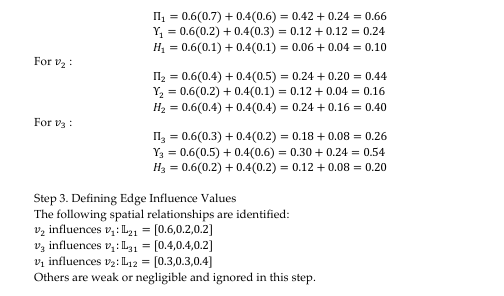A Bipolar Neutro-Spatial Graph Model for Evaluating Sustainable Regeneration Spatial Design Schemes in Historic Urban Areas
Keywords:
Sustainable Urban Regeneration; Neutrosophic Graphs; Bipolar Spatial Evaluation; Historic Urban Areas; Uncertainty in Urban Design; Spatial Decision Support; Neutro-Spatial Modeling.Abstract
Urban areas with historical value often face serious challenges of physical decay, social
decline, and environmental degradation. Sustainable regeneration of these areas requires
a careful evaluation of design schemes, balancing multiple and sometimes conflicting
factors such as heritage conservation, green space inclusion, community acceptance, and
economic feasibility. Traditional evaluation models cannot fully capture the uncertainty,
contradictions, and ambiguity present in such contexts.
This paper introduces a new mathematical model called the Bipolar Neutro-Spatial Graph
Model (BNSGM), which uses a customized form of neutrosophic bipolar vague
representation to evaluate spatial regeneration schemes. Each urban element (like a
building, plaza, or street) is represented as a node with positive, neutral, and negative
evaluation scores for each sustainability criterion. Relationships between these elements,
such as spatial influence or policy conflict, are modeled as directed edges with bipolar
weights. The model provides a complete evaluation score for each regeneration scheme,
considering both supportive and opposing indicators, as well as uncertain aspects.
A full case study is presented, using real spatial data and indicators from an old urban
district. The results show how the model supports better decision-making in complex
urban regeneration processes, where uncertainty and disagreement are unavoidable. This
work offers a new way to mathematically structure and evaluate sustainable design
strategies in old cities with historical, social, and economic challenges.
Downloads

Downloads
Published
Issue
Section
License
Copyright (c) 2025 Neutrosophic Sets and Systems

This work is licensed under a Creative Commons Attribution 4.0 International License.


